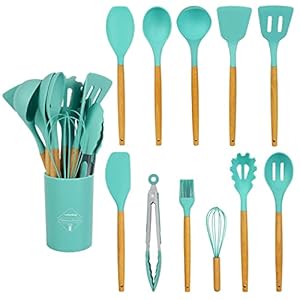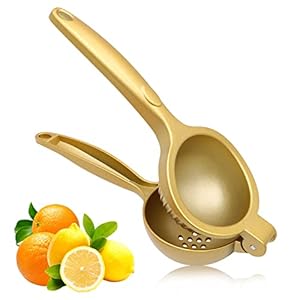
Each restaurant I’ve ever labored in had a minimum of one convection oven whirring away always. They’ve lengthy been a staple in skilled kitchens, however in recent times, they’ve grow to be extra standard in dwelling kitchens, too. Roughly 25% of US households had a convection oven in 2010, in keeping with a report cited in the Denver Post, and newer estimates put that quantity anyplace from 35% to 60%. Market researchers predict that the $3.8 billion international convection market will develop by greater than 5% by means of 2030.
However what’s convection, precisely? To grasp how convection works, when to make use of it, and whether or not an oven with convection settings is well worth the regularly greater price ticket, I consulted two specialists: Sahil Sethi, culinary director of Sifr restaurant in Chicago, Illinois, and Severe Eats culinary editor Genevieve Yam. Right here’s the whole lot it’s worthwhile to know.
What’s Convection?
One approach to perceive convection is to match it to non-convection cooking. In case you fireplace up your oven utilizing conventional settings, there’s a single warmth supply—normally situated under the oven flooring—that raises its inside temperature. Finally, the oven cavity warms up as warmth from that supply will get trapped inside it.
Convection ovens complement that one warmth supply with followers that constantly flow into warmth, so your oven will get hotter quicker and maintains a extra constant temperature. It might have one convection setting or an array of them—like convection bake, convection roast, and convection broil—however all contain combining warmth and air circulation.
“It’s the rearrangement of scorching air,” says Sethi. “The warmth circulates from hotter to cooler areas of your oven, so what you have got within the oven cooks extra evenly and shortly. It’s not simply getting brown on one aspect.”
Convection settings prepare dinner meals quicker than non-convection modes as a result of transferring air transfers warmth extra quickly than stagnant air. This would possibly sound summary, however it’s akin to the distinction between strolling down the road on a cold day versus on a cold and windy day. You’ll really feel a lot colder within the latter as a result of the windchill transfers the chilly to your pores and skin extra shortly.
“Convection is an influential phenomenon, contributing because it does to winds, storms, ocean currents, the heating of our houses, and the boiling of water on the range,” creator Harold McGee writes in his seminal food-science e-book On Meals and Cooking.
Even for those who’ve by no means used an oven with convection settings, you could already be accustomed to the method. “The air fryer may be very standard, and it’s mainly a tiny convection oven,” says Yam. “It’s extraordinarily environment friendly at cooking as a result of it circulates air round your meals and will get issues crispy tremendous quick.”
When to Use Convection
Each standard oven has scorching spots, or areas which might be hotter than others. In consequence, your roast chicken would possibly prove golden on one aspect and frustratingly undercooked on the opposite. Convection eliminates this situation by preserving the warmth in fixed movement.
:max_bytes(150000):strip_icc()/20230905SEA-HowtoCarveaRoastChicken-AmandaSuarez-00-1-92850971ebe64be19959251553d91679.jpg)
Perfect Roast Chicken
There are numerous preparations that may profit from convection. Use it to create a fantastically brown exterior on roast hen or turkey, bake a golden-brown pie crust, caramelize hardy root greens like carrots, or focus the flavors of water-heavy veggies like zucchini and eggplant.
“Individuals normally flip to convection settings when they need further shade, when they need that Maillard reaction,” says Yam, referring to the chemical response that happens between amino acids and decreasing sugars at excessive temperatures, which causes meals to brown and develop heat, roasty flavors. “In case you’re making an attempt to get a crispy crust, otherwise you need some caramelization, otherwise you desire a extra even bake in your pastries, that’s when most individuals will choose the convection setting.”
Sethi struggles to think about an occasion wherein he wouldn’t use convection settings in his kitchen. “I’d use it for baking, and for roasting a hen or a turkey to ensure the breast cooks concurrently the thighs and legs, and all of it will get that amber shade,” he says. “Even for those who’re simply roasting potatoes, it should prepare dinner them very evenly.”
When To not Use Convection
Whereas convection works in lots of preparations, there are occasions to keep away from utilizing it. This contains if you’re making one thing fragile that should rise within the oven—like a soufflé, flan, macarons, or delicate custard—as a result of the airflow can harm its form.
Breads aren’t all the time nice candidates for convection both. Sethi makes use of convection to bake sourdough breads as a result of he likes how the airflow browns the crusts, however some cooks discover that convection dehydrates their loaves too shortly, creating an unpleasantly arduous exterior earlier than the within absolutely bakes. Equally, quickbreads with very moist doughs—like banana and zucchini breads—are finest baked in conventional oven settings to keep away from crisping their outsides earlier than their moist interiors have time to set.
The speedy airflow of convection can even toughen the fragile florets of cruciferous greens like broccoli. “Given the spread-out construction of the florets and the air areas between the buds, the convection setting dries the broccoli too shortly, making it leathery in texture,” writes Severe Eats contributor Swetha Sivakumar in her information to creating roasted broccoli that’s tender and crispy.
Convection Baking vs. Convection Roasting
Some ovens have particular convection settings, akin to “convection roast” and “convection bake.” There’s no business customary for these modes, so verify your oven’s proprietor’s handbook or the model’s web site for particulars on how they work in your particular equipment.
In most situations, the distinction between convection roasting and convection baking comes right down to the variety of warmth sources which might be circulated. In lots of home equipment, the convection roasting mode prompts two warmth sources: one on the prime of the oven and one other at its base. The convection baking setting usually entails only one warmth supply on the base of the oven.
Can You Use Convection Settings When a Recipe Doesn’t Name for Them?
The specialists I spoke to advocate following recipes as written; nonetheless, if you wish to use a convection setting on a recipe that doesn’t name for it, it’s finest to shorten the general cooking time. Your oven will preserve hotter temperatures than if it had been on non-convection settings, so decreasing the prepare dinner time helps stop overcooking. Along with shortening the prepare dinner time, it additionally is sensible to decrease the temperature a bit when cooking with convection. As a normal rule of thumb, for those who’re utilizing convection on a recipe that doesn’t name for it, decrease your oven temperature by 25°F (4°C) to accommodate the quicker warmth switch.
How a lot faster your meals will prepare dinner is dependent upon its measurement, form, and density. “Let’s say cooking a hen in a daily oven goes to take you an hour and 10 minutes,” says Sethi. “In case you’re doing a median, two- to two-and-a-half-pound hen, it should prepare dinner in 35 to 40 minutes in a convection oven.” To stop overcooking, hold an in depth eye in your meals, verify for indicators of doneness like browned edges, and take the interior temperature of proteins midway by means of the cooking time.
What to Do if You Don’t Have Convection Settings
In case your equipment doesn’t have convection settings, you may create related outcomes by adjusting the temperature and rotating your pans. Begin by attending to know your oven. Affix a temperature tracker (Yam is a fan of ThermoWorks ChefAlarm) to find out how effectively it maintains temperatures. Establish scorching spots by moving a small oven thermometer to completely different corners of an empty, preheated oven, and noting which areas keep cooler than others.
As soon as you recognize the place the most popular and coolest components of your oven are, you may flow into your pans as they prepare dinner to imitate the airflow of convection settings. “The recent air isn’t circulating to the chilly components,” Sethi says. “When you flip the product and take it towards the new aspect, it provides you with extra even cooking.”
For instance, for those who’re roasting a hen, and you recognize that your oven is hottest in its rear proper nook, rotate the pan each 15 to twenty minutes. This fashion, either side of the chook is uncovered to the varied temperature zones.
To recreate the browning that convection settings convey to buttery baked items like pies, preheat the oven to a barely greater temperature to begin. In case your pie recipe says to bake on convection settings at 350°F (177°C), for instance, “you may set your oven to 425°F (218°C) and bake your pie at 425°F for 10 minutes earlier than reducing the oven to 350°F (177°C),” says Yam. “That’s going to provide you a little bit oomph of warmth and assist your pie get some coloring to hurry up that course of.”
Shield Your Warmth
Whether or not you employ convection or non-convection settings, ensure that to maneuver shortly any time you open the oven door. “What’s most essential is making certain that the temperature of your oven is constant,” says Yam. “Even in case you have the convection setting on, for those who hold opening the oven door, your meals is rarely going to prepare dinner and brown since you are letting all that scorching air out.”
Rotate pans as shortly as doable, and if you’re flipping roast veggies or doing something that takes longer than 30 seconds, shut the oven door and relaxation pans on a trivet or cooling rack. Time is valuable—and so is your cooking.
The Takeaway
Convection maintains a constant temperature and cooks meals extra shortly than conventional ovens. It’s ultimate for if you need to brown or caramelize meals, prepare dinner extra shortly, or create crispy edges. Skip convection if you’re making one thing very delicate, or for those who don’t need to develop texture (akin to a browned crust) on its exterior. If a recipe doesn’t name for convection, you may nonetheless use it, simply ensure that to decrease the unique temperature by about 25°F (4°C), and control your meals because it cooks. And for those who don’t have convection settings, you may nonetheless mimic the method by discovering the new spots in your oven and rotating your pan accordingly all through cooking.
Trending Merchandise











